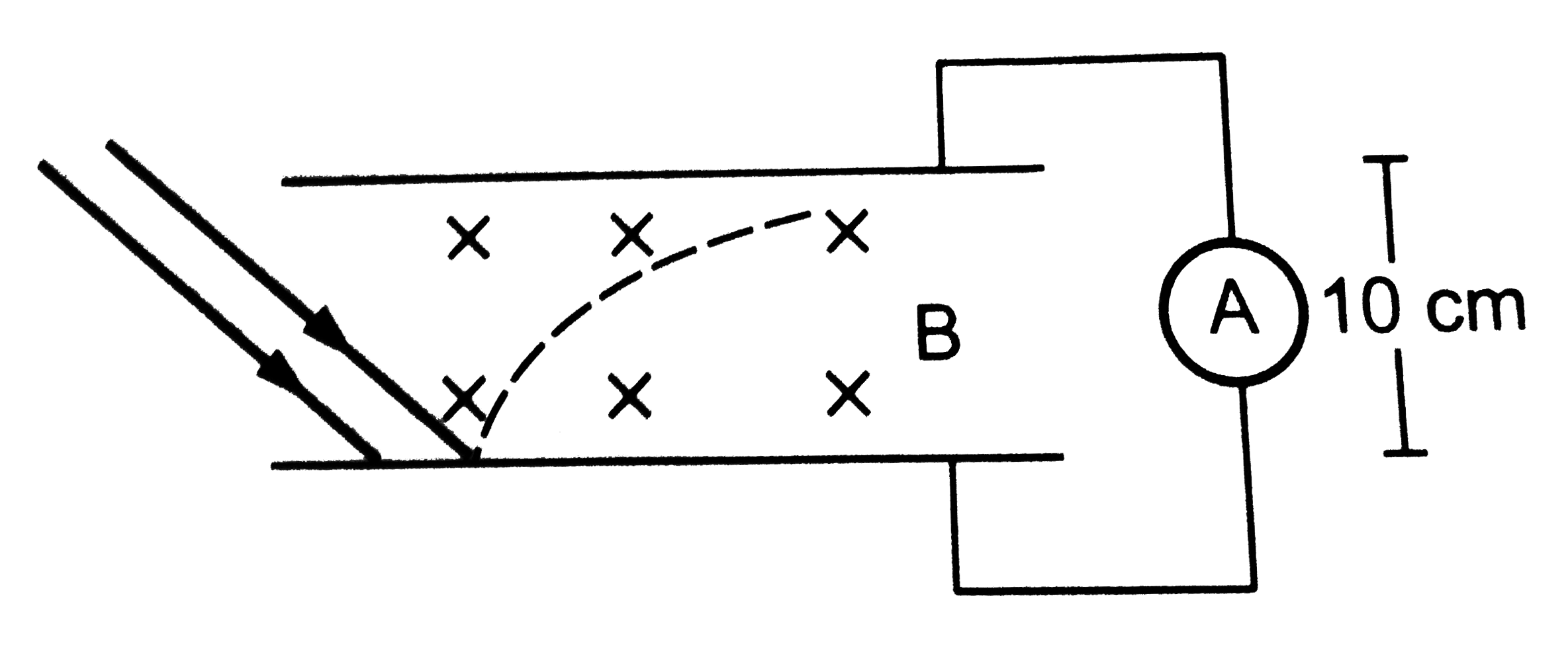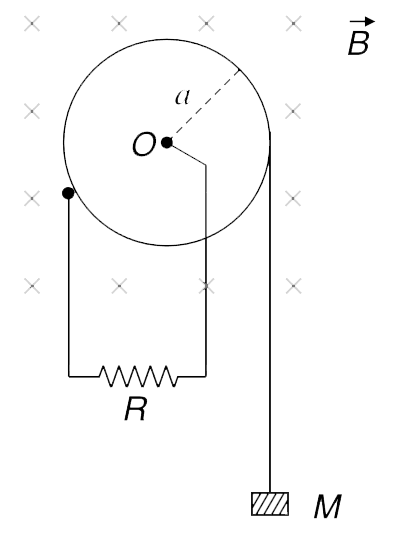In a photocell the plates P and Q have a separation of 5 cm, which are connected through a galvanometer without any cell. Bichromatic light of wavelengths and are incidenton plate Q whose work- functionis 2.39 eV. If a uniform magnetic field B exists parallel to the plates, find the minimum value of B for which the galvanometer shows zero deflection.
The correct Answer is:A
Energy of photons corresponding to light of wavelength is
and that corresponding to
As,
Photoelectric emission is possible with onlyd=r=5 cm:. r = 5cm = 0.05 m
Here,
Substituting the values , we have 19)xx9.109xx10^(-31))/((0.05xx(1.6xx10^(-19)= 5.68xx10^(-5) T
Topper's Solved these Questions
- BOOK - DC PANDEYCHAPTER - MODERN PHYSICS - 1EXERCISE - Exercise 33.16videos
MODERN PHYSICS - 1
- BOOK - DC PANDEYCHAPTER - MODERN PHYSICS - 1EXERCISE - Exercise 33.212videos
MODERN PHYSICS - 1
- BOOK - DC PANDEYCHAPTER - MODERN PHYSICS - 1EXERCISE - Example Type 43videos
MODERN PHYSICS - 1
- BOOK - DC PANDEYCHAPTER - MODERN PHYSICSEXERCISE - Integer Type Questions17videos
MODERN PHYSICS
- BOOK - DC PANDEYCHAPTER - MODERN PHYSICS - 2EXERCISE - Level 2 Subjective10videos
MODERN PHYSICS - 2
Similar Questions
In a photocell bi chromatic light of wave length 2480A0 and 6000A0 are incident on a cathode whose workfunction is 4.8eV.If a uniform magnetic field of 3×10−5T exists parallel to the plate, find the radius of the circular path described by the photoelectron. (mass of electron is 9×10−31kg)
View SolutionTwo metallic plates P (collector) and Q (emitter) are separated by a distance of 0.10 meter. These are connected through an ammeter without any cell. A magnetic field B exists parallel to the plates. Light of wavelength between 4000Åand6000Å fall on the plate whose work function is 2.39eV. Calculate the minimum value of B for which the current registered with ammeter is zero. Use, h=6.6×10−34Js,e=1.6×10−19C
View Solution
Knowledge Check
- Question 1 - Select One
In a photocell bichromatic light of wavelength 2475Å and 6000Å are incident on cathode whose work function is 4.8eV. If a uniform magnetic field of 3×10−5tesla exists parallel to the plate, the radius of the path described by the photoelectron will be (mass of electron =9×10−31kg)
A1cmB5cmC10cmD25cm - Question 2 - Select One
Two metallic plates P(collector) and Q (emitter) are separated by a distance of 0.2 m. These are connected through an 0.2 m. These are connected through an ammeter without any cell. A magnetic field B exists parallel to the plates. Light of wavelengths between 2000 Å and 3000 Å fall of the plate Q whose work function is 2.22 eV.
The minimum value of B for which the current registered with ammeter is zero, isA3.8×10−5TB4.7×10−5TC6.7×10−5TD8.6×10−5T - Question 3 - Select One
A parallel-plate capacitor is clamped to a stand such that its plates are vertical. It remains connected to a cell through a centre-zero galvanometer. A metal sheet which is parallel to the plate of the capacitor and whose thickness is slightly less than the seperation between these plates is now allowed to fall under gravity though the plates, wihtout touching them.
Which of the following correctly describes the deflection(s) of the galvanometer?AIt will show a constant deflection to one side only, as long as the sheet is passing through the plates.BIt will show a variable deflection to one side only, as long as the sheet is passing through the plates.CIt will show deflection first to one side and then to the other.DIt will not show any deflection first to one side and then to the other.
In an experiment on photoelectric effect, the emitter and the collector plates are placed at a separation of 10cm and are connected through an ammeter without any cell.

A magnetic field B exists parallel to the plates. The work function of the emitter is 2.39 e V and the light incident on it has wavelengths between 400nm and 600nm. Find the minimum value of B for which the current registered by the ammeter is zero. Neglect any effect of space charge.View SolutionA square coil of edge I having n turns carries a curent i. it is kept on a smooth horizontal plate. A uniform magnetic field B exists in a direction parallel to an edge the total mass of the coil is M. What should be the minimum value of B for which the coil will start tipping over?
View SolutionLight of wavelength 1800 Å ejects photoelectrons from a plate of a metal whose work functions is 2 eV. If a uniform magnetic field of 5×10−5 tesla is applied parallel to plate, what would be the radius of the path followed by electrons ejected normally from the plate with maximum energy.
View Solution(a) A beam of 450 nm light is incident on a metal having work function 2.0eV and placed in a magnetic field B. The most energetic electron emitted perpendicular to the field are bent in circular are of radius 20 cm. Find the value of B.
(b) A small plate of metal (work function =1.17eV) is placed at a distance of 2 m from a monochromatic light source of wavelength 4.8×10−7 m and power 1.0W. The light falls normally on the plate. Find the number of photons striking the metal plate per square meter per second. If a constant uniform magnetic field of strength 10−4 T is applied parallel to the metal surface, find the radius of the largest circular path following by the emitted photoelectrons.View SolutionA metallic pulley is in the shape of a disc of radius a. It can rotate freely about a horizontal axis passing through its centre. The moment of inertia of the pulley about this axis is I. A light string is tightly wrapped around the pulley with its one end connected to a block of mass M. The centre of the pulley and its circumference are connected to a resistance R as shown. The contact of resistance at the circumference does not cause any friction. A uniform magnetic field B is switched on which is parallel to the axis of rotation of the pulley (see Figure). The mass M is allowed to fall. Assume that resistivity of the material of the pulley is negligible.
(a) Find the acceleration of the block of mass M at the instant its velocity becomes v0.
(b) Assuming that the block can fall through a large distance, calculate the terminal speed (vT) that it will acquire.
(c) Find the rate of change of kinetic energy of the pulley at the instant speed of the falling block is vT2.
 View Solution
View Solution

